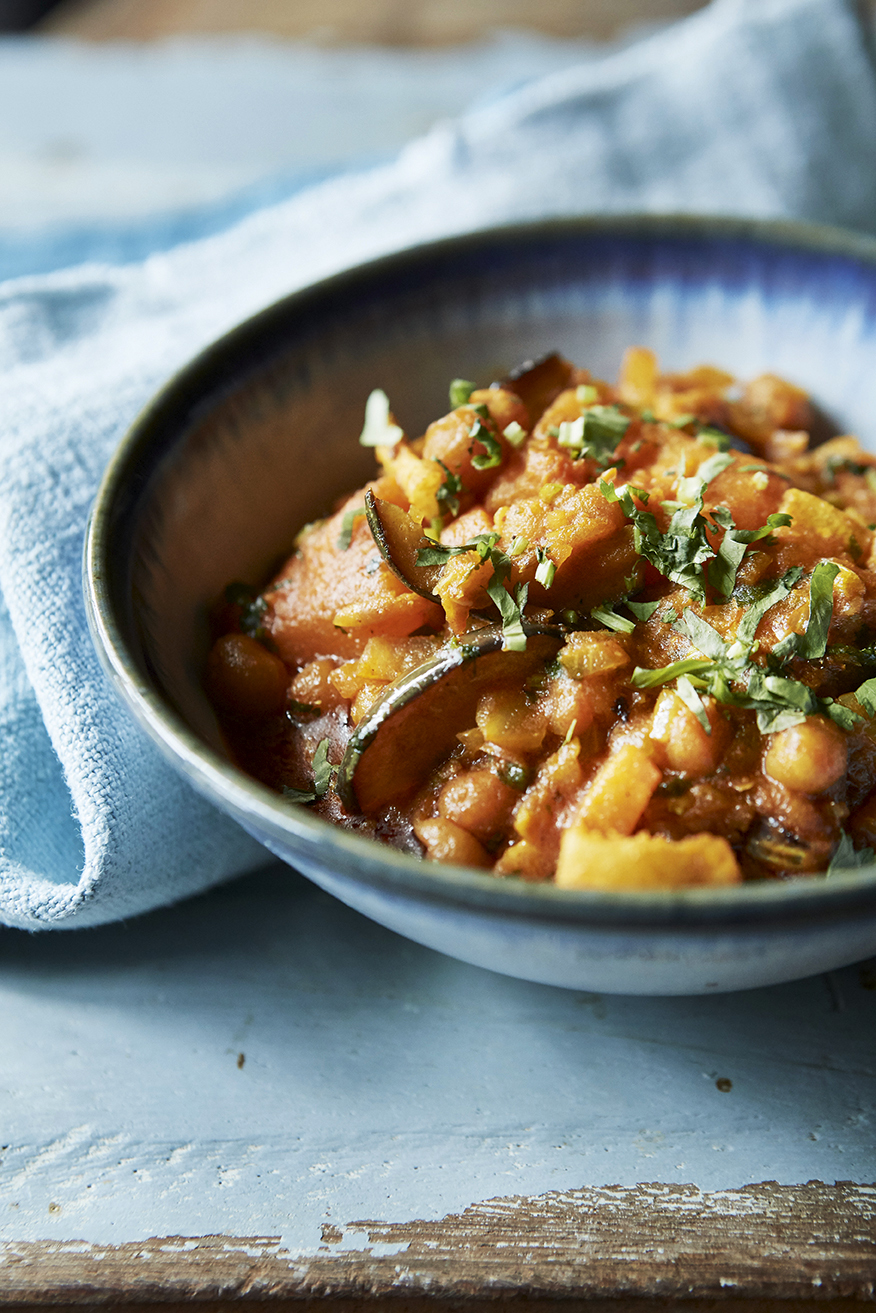Get Premium access to all the latest content online
Subscribe and view full print editions online... Subscribe
Serves 4 Starters and mains
First, prepare the yellow split peas. Put the rinsed peas in a bowl, add cold water to cover and leave to soak for 20 minutes, then drain. Transfer to a saucepan, add plenty of water to cover and a pinch of salt and bring to the boil over a high heat, skimming the surface as necessary. Simmer for 20 minutes or until just tender, then drain well and set aside.
To make the tamarind water using a block, put it in a bowl, pour over around 400ml hot water and, when it’s cool enough, use your fingers to break up the pulp. After all the pulp has dissolved, making the liquid darker and thicker, strain it into a clean glass jar, screw on the lid and store in the fridge for 2–3 weeks to use in other curries. It can also be frozen and defrosted as required. If using paste, dilute with 2 parts water.
Heat a large dry wok over a high heat. Add the oil and swirl it around. Reduce the heat to medium, add the cumin seeds and stir-fry until they crackle. Add the onion and continue stir-frying until the onion is translucent. Stir in the bay leaf, ground coriander, chilli powder, cumin, turmeric and the split peas, and continue stirring for 30 seconds to cook the ground spices. Watch closely to make sure they don’t burn.
Stir in the tamarind water with the pumpkin or squash, aubergines, carrots, potatoes and mooli, and stir until the vegetables are well coated in the spices.
Pour in the stock and bring to the boil. Reduce the heat and leave the vegetables and split peas to simmer for 10–12 minutes until they are all tender. You should be able to squeeze the split peas between your fingers. Taste and add a little more salt, if necessary.
Garnish with coriander leaves and serve with sticky rice.
Cook’s note You can make tamarind water using a block of seedless, dried, compressed tamarind, available from Asian supermarkets. Or, if you prefer a milder flavour, use tamarind paste diluted with water. Both are preferable to bought tamarind extract, which tends to be overly salty.
This recipe is from the May 2022 issue of Food and Travel. To subscribe today, click here.

Advertisement
Subscribe and view full print editions online... Subscribe